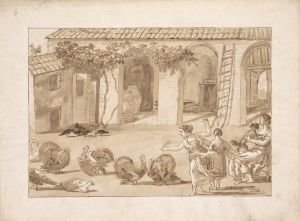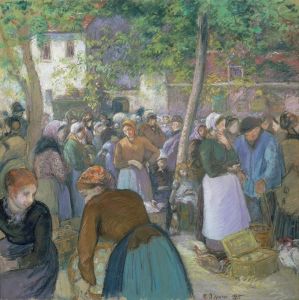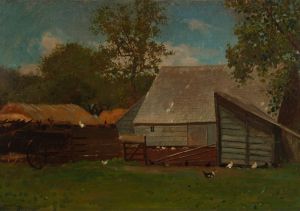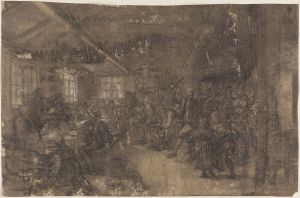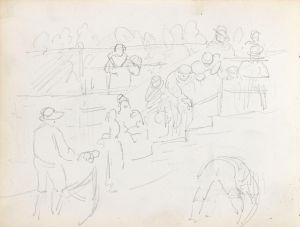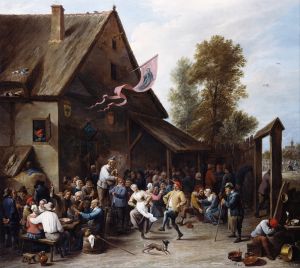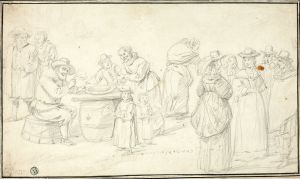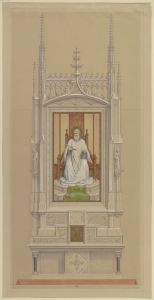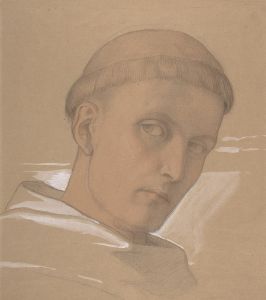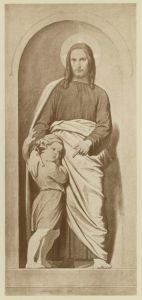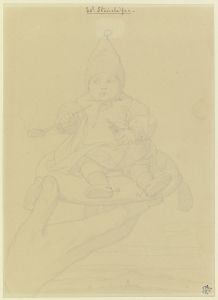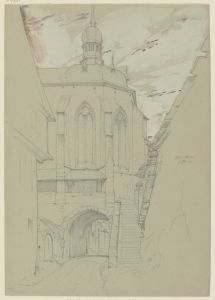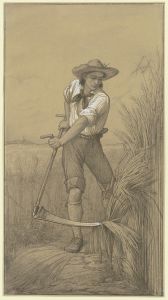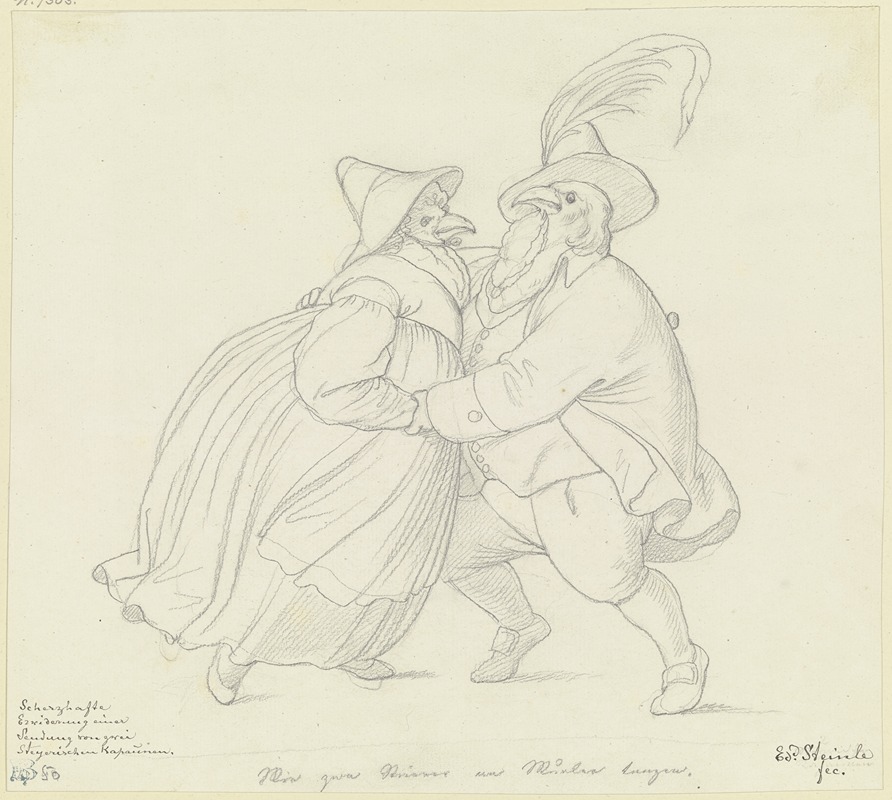
Zwei Kapaune als Steyerisches Bauernpaar tanzend
A hand-painted replica of Eduard von Steinle’s masterpiece Zwei Kapaune als Steyerisches Bauernpaar tanzend, meticulously crafted by professional artists to capture the true essence of the original. Each piece is created with museum-quality canvas and rare mineral pigments, carefully painted by experienced artists with delicate brushstrokes and rich, layered colors to perfectly recreate the texture of the original artwork. Unlike machine-printed reproductions, this hand-painted version brings the painting to life, infused with the artist’s emotions and skill in every stroke. Whether for personal collection or home decoration, it instantly elevates the artistic atmosphere of any space.
Eduard von Steinle, an Austrian painter and member of the Nazarene movement, created the artwork "Zwei Kapaune als Steyerisches Bauernpaar tanzend" (Two Capons Dancing as a Styrian Peasant Couple). Born in Vienna on July 2, 1810, Steinle was known for his religious and historical paintings, often characterized by their detailed and narrative style.
The painting "Zwei Kapaune als Steyerisches Bauernpaar tanzend" depicts two capons, which are castrated roosters, humorously dressed and posed as a peasant couple from Styria, a region in Austria. The capons are shown dancing, a whimsical and anthropomorphic portrayal that reflects Steinle's ability to blend humor with detailed artistry. This work is a fine example of Steinle's skill in combining human and animal characteristics to create a charming and engaging scene.
Steinle's involvement with the Nazarene movement, which sought to revive honesty and spirituality in Christian art, influenced his approach to painting. The Nazarenes were known for their detailed and idealized representations, often drawing inspiration from early Renaissance artists. Although "Zwei Kapaune als Steyerisches Bauernpaar tanzend" is a more light-hearted subject compared to Steinle's religious works, it still showcases his meticulous attention to detail and narrative composition.
The painting captures the essence of rural life in Styria, a region known for its rich cultural traditions and folk dances. By anthropomorphizing the capons, Steinle adds a layer of humor and charm, making the scene both entertaining and endearing. The costumes worn by the capons are likely inspired by traditional Styrian peasant attire, adding authenticity to the whimsical scene.
Eduard von Steinle's career included significant contributions to religious and historical art. He studied at the Academy of Fine Arts in Vienna and later moved to Frankfurt, where he became a professor at the Städelsches Kunstinstitut. Steinle's works were highly regarded for their spiritual depth and narrative quality, and he was a prominent figure in the 19th-century art scene.
"Zwei Kapaune als Steyerisches Bauernpaar tanzend" is a testament to Steinle's versatility as an artist. While he is primarily known for his religious and historical paintings, this work demonstrates his ability to infuse humor and charm into his art. The painting remains a delightful example of 19th-century genre painting, capturing a moment of joy and whimsy through the eyes of anthropomorphic animals.
Overall, Eduard von Steinle's "Zwei Kapaune als Steyerisches Bauernpaar tanzend" is a unique and engaging piece that reflects the artist's skill in blending detailed realism with playful imagination. It stands as a charming representation of Styrian culture and a testament to Steinle's diverse artistic talents.





